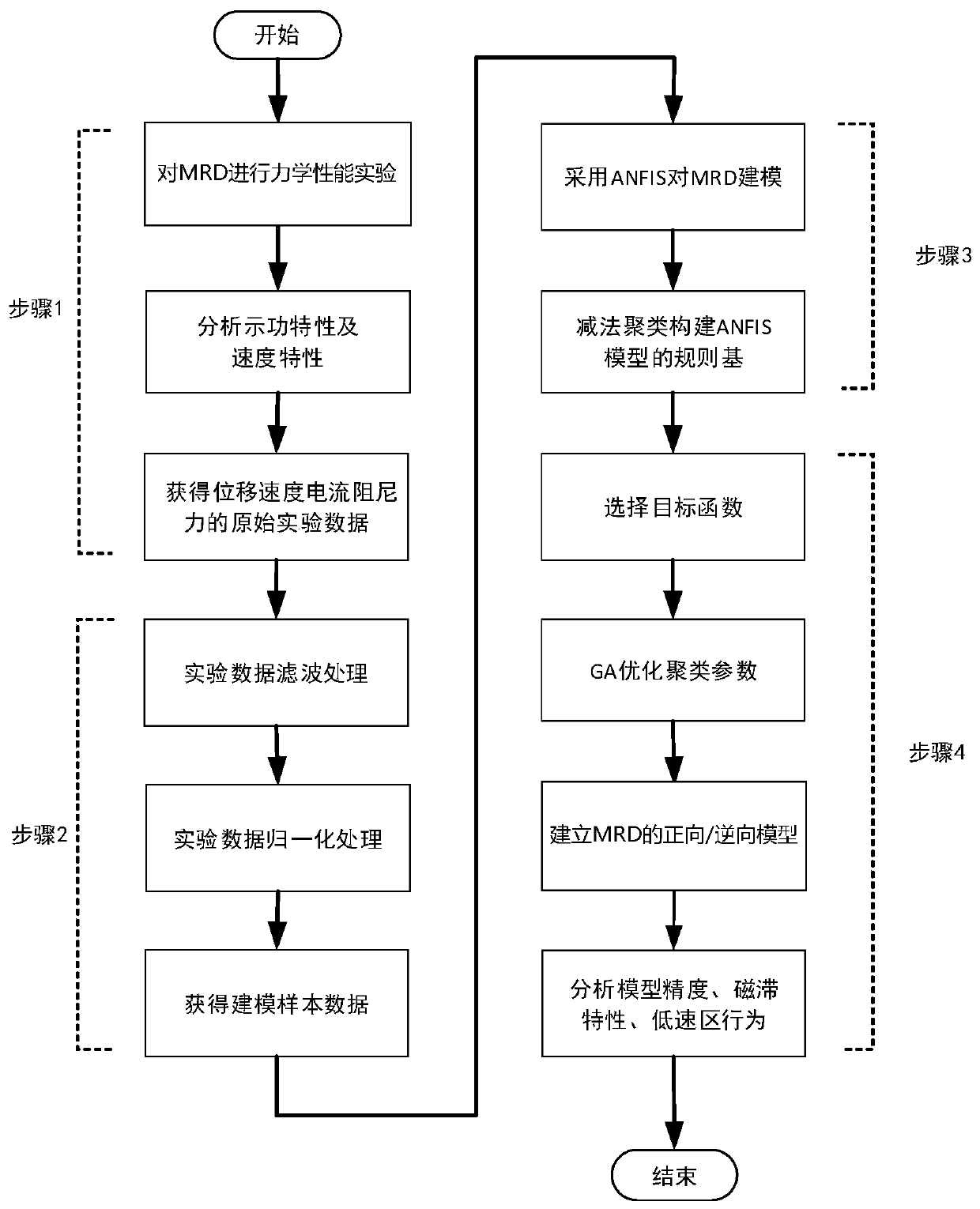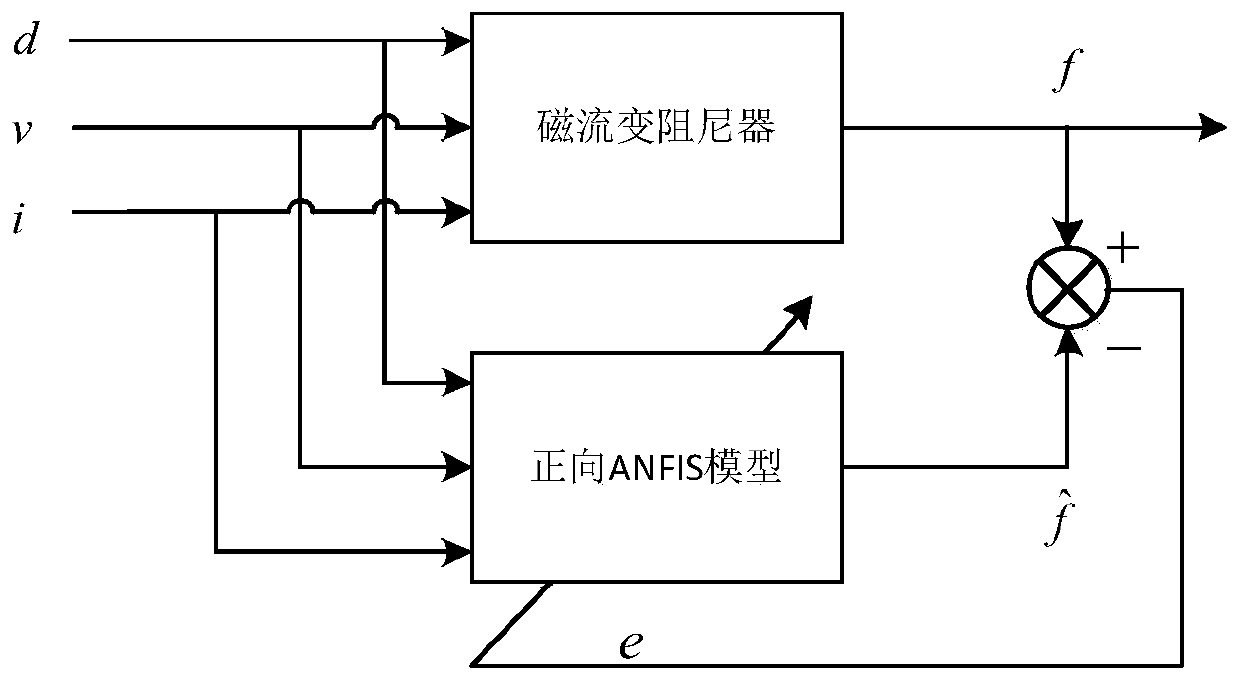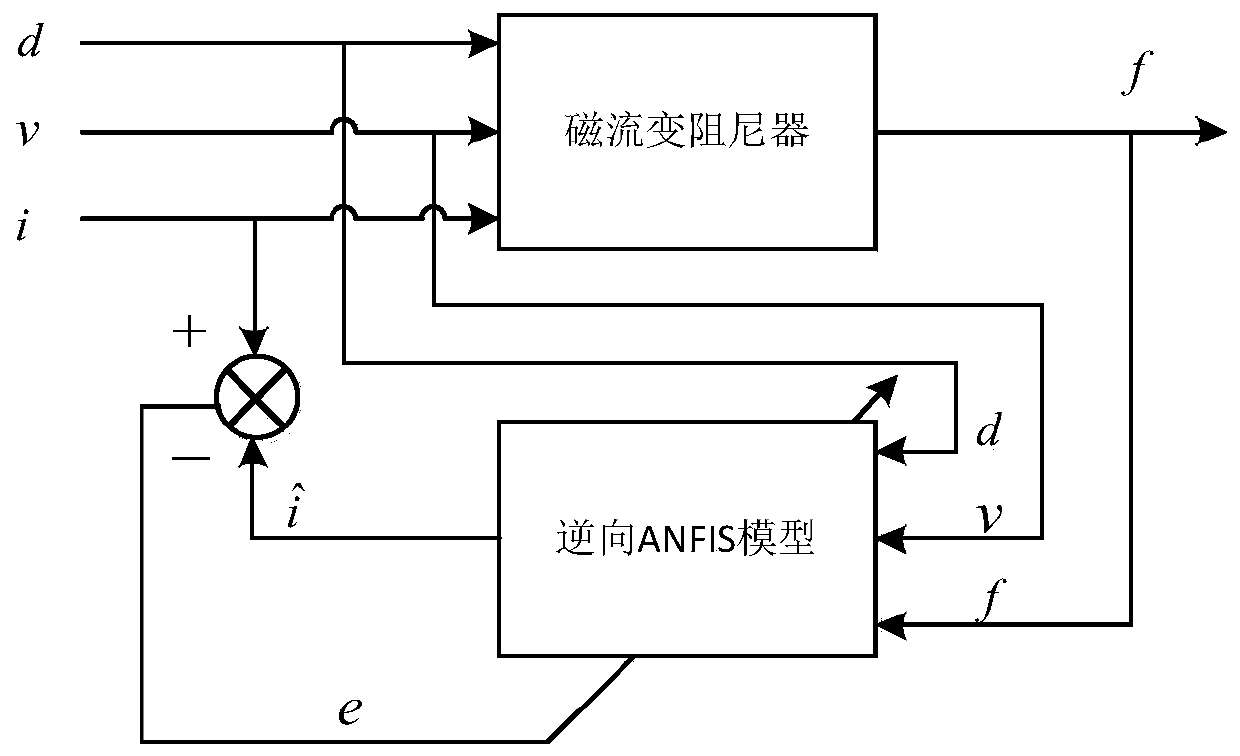Magneto-rheological damper hybrid modeling method
A magneto-rheological damper and hybrid modeling technology, applied in the direction of instruments, adaptive control, control/regulation systems, etc., can solve the problems affecting the nonlinear behavior description of the model accuracy, reduce the burden of online calculation, improve accuracy, Promote the effect of development and application
- Summary
- Abstract
- Description
- Claims
- Application Information
AI Technical Summary
Problems solved by technology
Method used
Image
Examples
Embodiment Construction
[0048] The present invention will be further described below in conjunction with accompanying drawing. The present invention comprises the steps:
[0049] Step 1. Carry out mechanical performance experiments on the MRD, analyze its display power characteristics and velocity characteristics, and obtain the original experimental data of piston displacement, velocity, current, and damping force.
[0050] Using the sinusoidal displacement excitation signal with the same input frequency and amplitude, and applying different input currents, the mechanical performance experiment of the magneto-rheological damper is carried out, and the MRD indicator performance and speed characteristics under different currents are analyzed, and the displacement, speed, current, and displacement of the piston are obtained. Raw experimental data for damping force.
[0051] Step 2. Carry out numerical filtering and normalization processing on the original experimental data, and create the input and ou...
PUM
 Login to View More
Login to View More Abstract
Description
Claims
Application Information
 Login to View More
Login to View More - R&D
- Intellectual Property
- Life Sciences
- Materials
- Tech Scout
- Unparalleled Data Quality
- Higher Quality Content
- 60% Fewer Hallucinations
Browse by: Latest US Patents, China's latest patents, Technical Efficacy Thesaurus, Application Domain, Technology Topic, Popular Technical Reports.
© 2025 PatSnap. All rights reserved.Legal|Privacy policy|Modern Slavery Act Transparency Statement|Sitemap|About US| Contact US: help@patsnap.com



